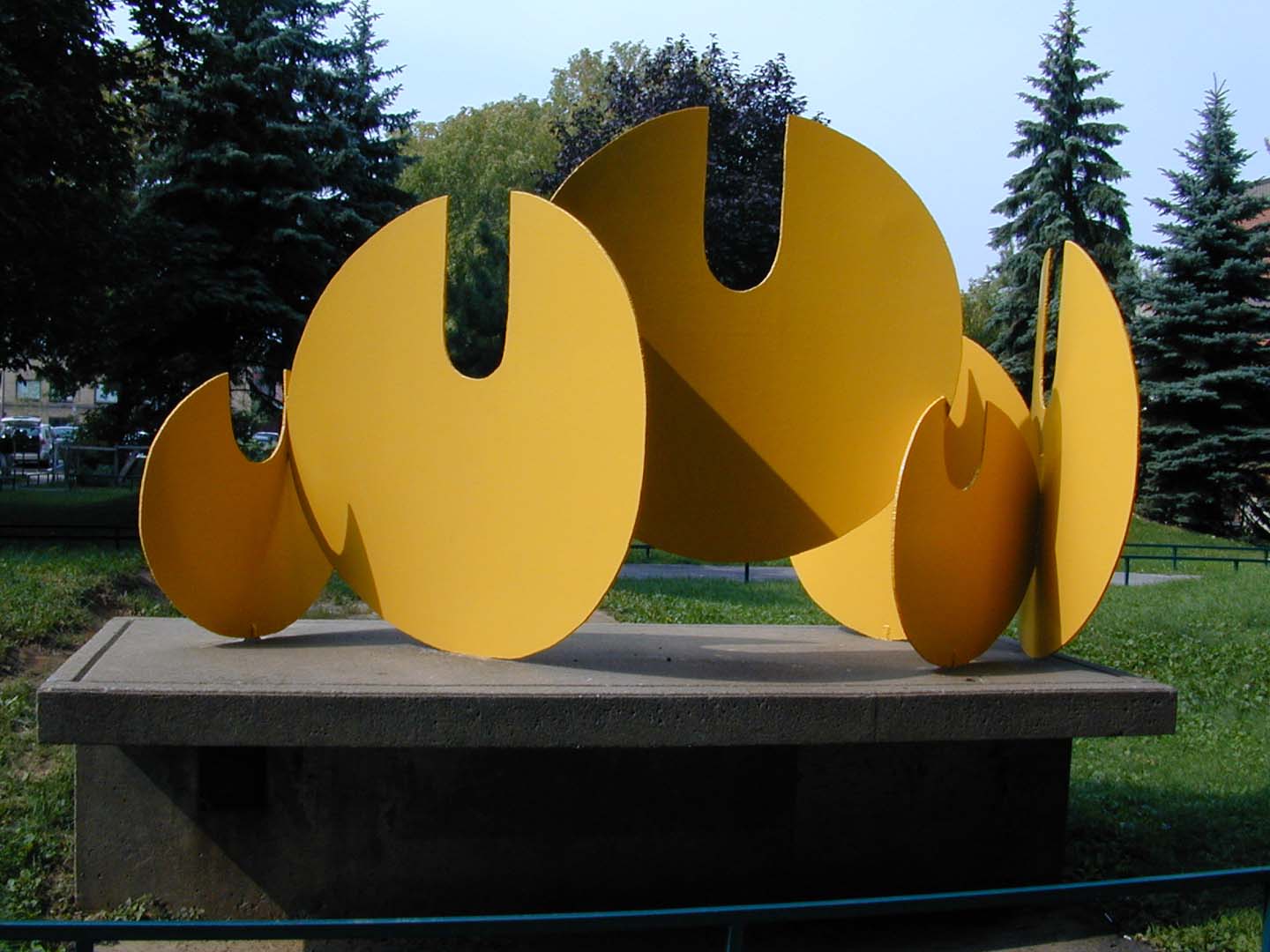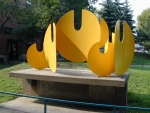F. Maurice Lemieux
Évolution de joie
1973
Presentation of the artwork
Surrounded by the buildings of the Mentana housing project, the artwork is presented on a concrete base that is raised slightly above ground level. The sculpture is composed of seven curved disks made of steel painted yellow. The disks are of different sizes and attached to the platform by two steel rods (one on each side). The disks are welded to each other. The top of each one has a U-shaped cut-out.The geometric composition generated by the arrangement of the coloured disks refers to some of the early constructivist experiments. This type of abstract figure resulting from an assemblage of monochrome steel elements was also an important aspect of Maurice Lemieux’s production, as is evidenced by other artworks of his included in the Ville de Montréal’s collection of works of public art.
Associated events
The artwork was produced in 1973 and is situated in the courtyard of the Mentana housing project, in the midst of residential buildings.
F. Maurice Lemieux
After attending the École d’Arts et Métiers de Valleyfield, Maurice Lemieux (1931–94) produced his first sculptures in the 1950s. He participated in the Madrid Biennale in 1957 and created an imposing wall sculpture for the Séminaire Saint-Jean-Iberville (today CÉGEP Saint-Jean-sur-Richelieu) in 1961. Between 1964 and 1971, he lived in Los Angeles, where he developed a new material that he called “aluminum foam.” In the early 1980s, he created Calcite, a permanent artwork for the De la Savane Métro station in Montréal.






